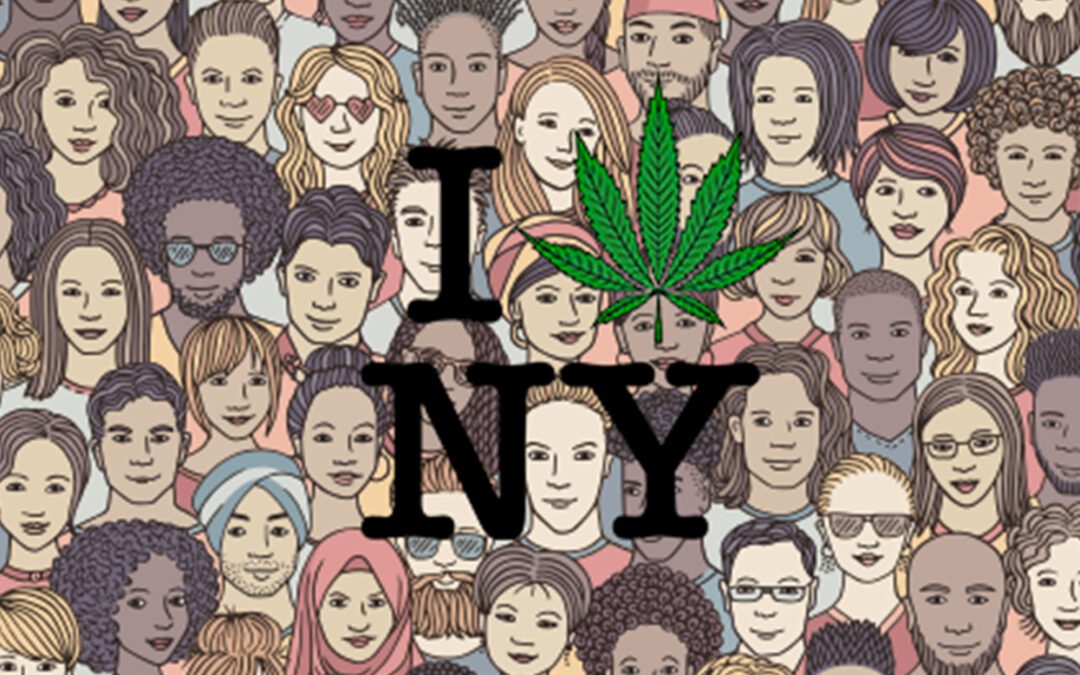After years of marijuana laws being used to oppress poor urban communities of color, the legalization of marijuana is now poised to make a lot of people money, but very few of those people will come from the communities who were affected by it. For years New York and other American cities have had two separate and unequal policies of enforcement for marijuana. One policy for the rich and white who are left alone to smoke and sell marijuana as they please, and another for poor urban communities of color who face constant harassment and harsh punishment for the same actions.
In New York City African Americans and Latino Americans are 8 times more likely to be arrested for marijuana despite studies that show white people, black people, and Hispanic people smoke marijuana at the same rate. During a 3month period in 2018 in NYC, more than 3500 people of color were arrested for weed and less than 400 white people were arrested. So white people who are 42% of New York’s population are less than 10% of marijuana arrests.
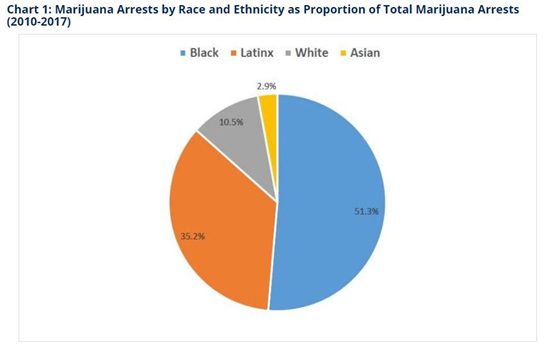
The enforcement of weed laws are not only racially biased but heavily based in class as well. Some of the poorest communities in New York are faced with harassment, illegal stop, and search, based on the enforcement of the prohibition of weed. In the South Bronx, Brownsville, East Harlem, East New York, and other poor neighborhoods marijuana-related arrests and harassment, have been excessive to the point of being unconstitutional.
Table 1: Highest Average Marijuana-Related Arrest Rates
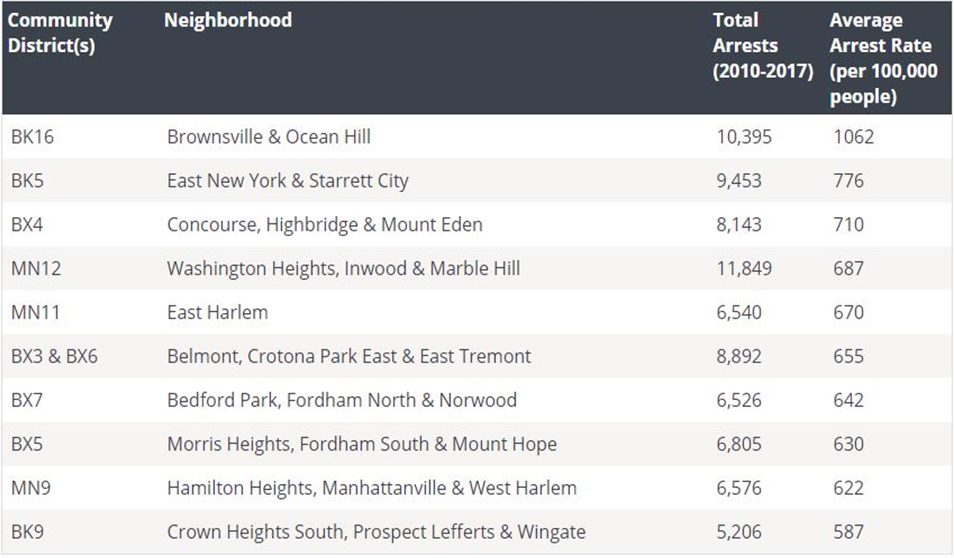
Meanwhile, Forest Hills, Upper East Side, Bayside, and Bensonhurst have been safe havens for young white people to smoke and sell marijuana with little police interference.
Table 2: Lowest Average Marijuana-Related Rates
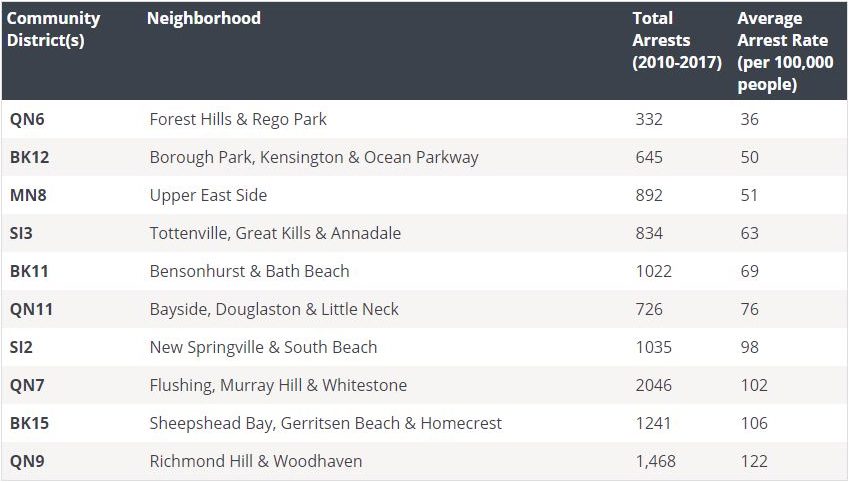
Marijuana police harassment has also targeted young people in particular. 90% of all NYC marijuana arrests were male, 70% were under the age of 30, with 25% being teenagers. This negatively affects the communities where young people of color are set up in a prison pipeline for harmless non-violent offenses.
Thousands of LatinX and Black young men have been thrust into the criminal justice system for smoking marijuana, which often has a terrible impact on the lives of them and their families. Once thrust into the prison, many of these young men are beaten by inmates and guards and forced to join gangs for their survival. Many young men of color lose jobs due to marijuana arrests and have trouble finding jobs with a conviction on their record and are forced to turn to the black market for money. Rather than rehabilitate criminals, the justice system takes non-violent marijuana smokers and often turns them into violent gang members.
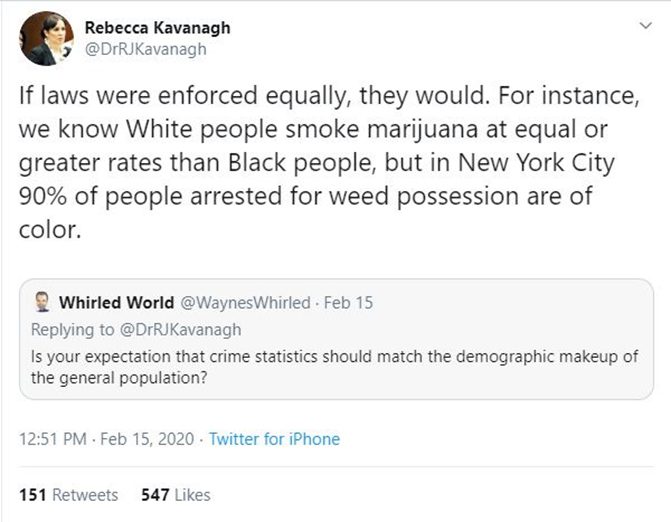
Several politicians in New York have called for the legalization of marijuana in New York to contain “economic justice†for “black and brown†people.  New York City Comptroller Scott Stringer has said, “not only is marijuana an untapped revenue source for the City and the State, but the prosecution of marijuana-related crimes has had a devastating and disproportionate impact on Black and Hispanic communities for far too long.†Scott Stringer called marijuana legalization “an opportunity to do what’s right and build up the very communities that criminalization tore down.â€
How can we make sure that working-class people of color get economic justice through the impending legalization of marijuana? One way is to ensure that tax revenues from marijuana go directly back to the communities that were affected by its prohibition. Another way is to ensure that a percentage of the licenses that will be necessary to sell marijuana legally, will go to people from those communities.
The legalization of marijuana will open several streams of income. The first would be in the agricultural sector. There will be permits needed to grow marijuana that should first go to people from communities who faced mass incarceration in the war on drugs. Permits to transport marijuana should also go to transportation companies owned by folks of color.
As marijuana becomes legal, there will be jobs for marketing, packaging, and distributing marijuana, along with physical, mental health, marijuana tourism, and entertainment. There needs to be a structure where the less privileged who have been damaged by the war on drugs may cash in on the marijuana boom through those jobs.
So far, few states that have legalized marijuana have made any inroads for making businesses available to people of color, poor people, or victims of the war on drugs. In Massachusetts, where recreational marijuana was made legal, only 1.2% of all marijuana businesses were owned by minorities, even though Massachusetts is 22% minority, and minorities own 12% of all other companies.
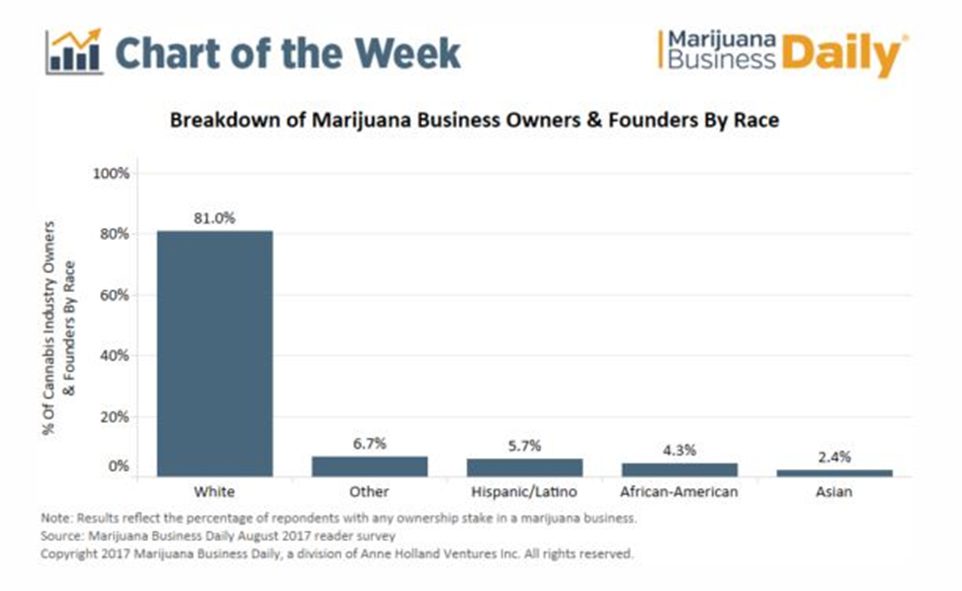
With income inequality at an all-time high and gentrification rapidly displacing working-class populations of color, new laws must be passed to allow jobs and businesses to flourish in urban communities’ with access to new companies. New York can not follow the trend of Massachusetts and pay back the poor communities of color that were devastated by the war drugs, with licenses and jobs to sell marijuana legally.
These changes can be made through political mobilization. Communities must use their voting power to force the government to bring some of the money, jobs, and businesses that will come from marijuana legalization into those same communities. This means voting at the city, state and federal levels and holding politicians accountable while demanding social equity initiatives.

